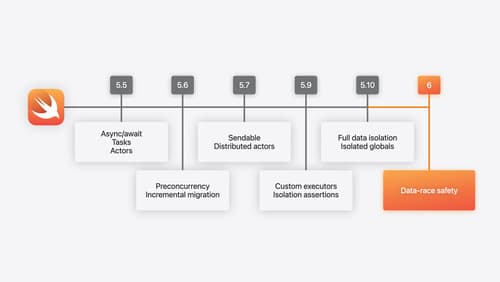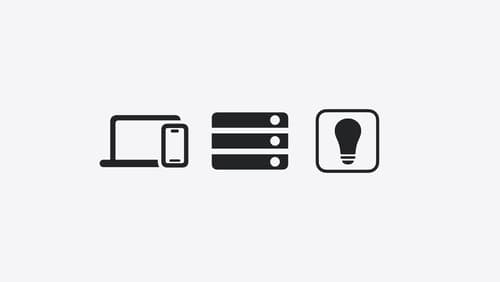I want to write command line tools with Swift. How do I get started?
Asked on 2024-08-21
1 search
To get started with writing command line tools using Swift, you can explore the features and design of Swift as a programming language. Swift is known for its modern syntax, performance, and safety, making it a great choice for developing a wide range of applications, including command line tools.
Here are some steps and resources to help you get started:
-
Learn Swift Basics: Familiarize yourself with Swift's core features and design principles. You can start by watching the session A Swift Tour: Explore Swift’s features and design, which provides an overview of Swift's capabilities.
-
Explore Swift's Concurrency Model: Understanding Swift's concurrency model, including async/await and actors, can be beneficial for writing efficient command line tools. This is covered in the session What’s new in Swift.
-
Cross-Platform Development: Swift is a cross-platform language, officially supported on Apple platforms, Linux, and Windows. You can use tools like SourceKit LSP for development in various environments. This is discussed in the session What’s new in Swift.
-
Swift on Server: If your command line tool involves server-side components, consider exploring the Swift on Server ecosystem. The session Explore the Swift on Server ecosystem provides insights into building server applications with Swift.
-
Embedded Swift: If your command line tool needs to interact with hardware or embedded systems, you might find the session Go small with Embedded Swift useful. It covers using Swift in resource-constrained environments.
By leveraging these resources, you can effectively start developing command line tools with Swift, taking advantage of its modern features and cross-platform capabilities.

What’s new in Swift
Join us for an update on Swift. We’ll briefly go through a history of Swift over the past decade, and show you how the community has grown through workgroups, expanded the package ecosystem, and increased platform support. We’ll introduce you to a new language mode that achieves data-race safety by default, and a language subset that lets you run Swift on highly constrained systems. We’ll also explore some language updates including noncopyable types, typed throws, and improved C++ interoperability.

A Swift Tour: Explore Swift’s features and design
Learn the essential features and design philosophy of the Swift programming language. We’ll explore how to model data, handle errors, use protocols, write concurrent code, and more while building up a Swift package that has a library, an HTTP server, and a command line client. Whether you’re just beginning your Swift journey or have been with us from the start, this talk will help you get the most out of the language.

Platforms State of the Union
Discover the newest advancements on Apple platforms.
